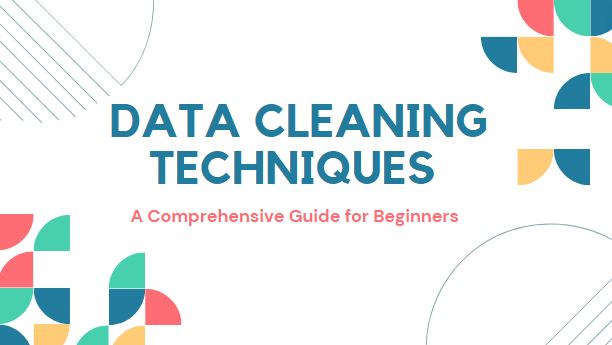
Data is the lifeblood of any modern organization. However, raw data is rarely ready for analysis. Before it can be used for insights, data must be cleaned, refined, and structured—a process known as data cleaning. This blog will explore essential data-cleaning techniques, why they are important, and how beginners can master them.
What is Data Cleaning?
Data cleaning, also known as data cleansing or data scrubbing, involves identifying and correcting inaccuracies, inconsistencies, and errors in data. The goal is to improve the quality of data, making it accurate, complete, and ready for analysis. Clean data is crucial for reliable decision-making and data-driven strategies.
Why is Data Cleaning Important?
The importance of data cleaning cannot be overstated. Poor data quality can lead to misleading insights, poor decision-making, and wasted resources. Clean data ensures that analyses are accurate, consistent, and reliable, which is critical for business intelligence, machine learning models, and any data-driven process.
Common Data Cleaning Challenges
Data cleaning can be challenging due to several factors:
- Incomplete Data: Missing values are a common issue, requiring imputation or deletion.
- Inconsistent Data: Variations in data formats, units, and spellings can lead to inconsistencies.
- Duplicate Data: Duplicate entries can skew analysis results.
- Outliers: Extreme values that deviate significantly from the rest of the data can distort results.
Addressing these challenges is a critical aspect of data cleaning.
Key Data Cleaning Techniques
Here are some of the most effective data cleaning techniques:
a. Removing Duplicate Records
Duplicates occur when the same data entry appears more than once. Removing these duplicates is essential to avoid inflated or skewed results.
b. Handling Missing Data
Missing data can be handled by either deleting incomplete records or imputing missing values using statistical methods like mean, median, or mode imputation.
c. Correcting Inconsistencies
Standardizing data formats, units of measurement, and spelling errors ensures consistency across the dataset.
d. Dealing with Outliers
Outliers can be managed by using statistical methods to identify and either remove or transform these extreme values.
e. Validating Data Accuracy
Data validation involves checking data against predefined rules to ensure accuracy, such as verifying email formats or ensuring numerical data falls within expected ranges.
f. Standardizing Data
Data standardization involves converting data into a common format, making it easier to compare and analyze. This includes converting dates to a uniform format or ensuring consistent text capitalization.
Tools for Data Cleaning
Various tools are available to help with data cleaning. These tools range from simple spreadsheet applications like Microsoft Excel to more advanced tools like OpenRefine, Python libraries (Pandas), and R packages.
a. Microsoft Excel
Excel provides basic data cleaning features like removing duplicates, sorting, filtering, and simple data validation.
b. OpenRefine
OpenRefine is a powerful open-source tool designed specifically for data cleaning, offering advanced features like clustering and transforming data.
c. Python (Pandas)
The Pandas library in Python is widely used for data cleaning, offering functions to handle missing data, remove duplicates, and perform data transformations.
d. R (tidyverse)
R’s tidyverse packages, particularly dplyr and tidyr, offer robust tools for data cleaning and manipulation.
Best Practices for Data Cleaning
Following best practices ensures efficient and effective data cleaning:
- Document Your Process: Keep a detailed log of the steps taken during data cleaning to ensure transparency and reproducibility.
- Automate Where Possible: Use scripts and automation tools to speed up repetitive tasks.
- Iterate: Data cleaning is often an iterative process. Revisit and refine your data cleaning steps as necessary.
- Collaborate: Involve team members in the data cleaning process to gain different perspectives and insights.
Conclusion
Data cleaning is a crucial step in preparing data for analysis. By mastering these techniques and using the right tools, beginners can ensure their data is accurate, consistent, and ready for meaningful insights. Clean data leads to better decision-making, more reliable models, and ultimately, a stronger foundation for any data-driven initiative.


